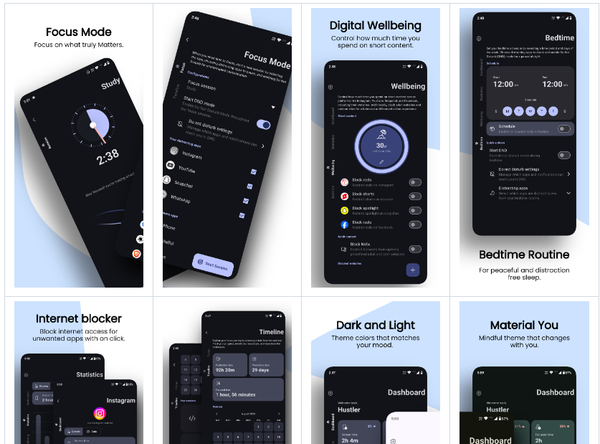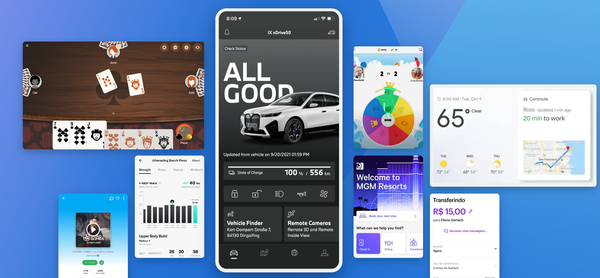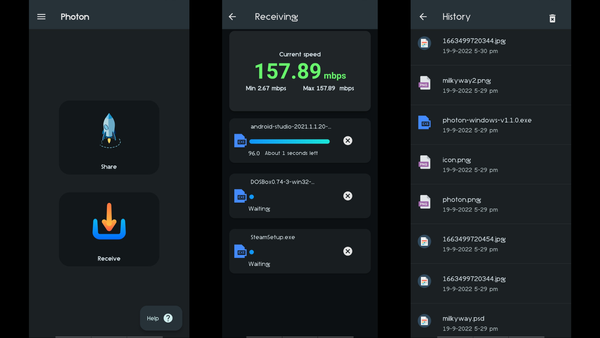Top 9 Reasons to Choose Flutter for App Development in 2023
Although Flutter is still considered to be fairly new, it is one of the most well-liked mobile development frameworks among programmers worldwide. It contains every component needed to quickly construct reliable native-like applications for various devices.
So why is Flutter so trendy nowadays? Will it work for your business? To understand that, it's critical to educate yourself on Flutter and comprehend the pros and cons of this technology.
It is definite that this article’s main purpose is to cover the top reasons why using Flutter for building Cross-Platform Apps is a great idea. Yet, aside from the reasons to choose Flutter, there will be a short definition and a short description of how the Flutter framework works and what are some of the weak aspects of this technology you should be aware of.
What is the Flutter Framework?
In May 2017, Google unveiled Flutter, a free and open-source mobile UI framework. In other words, Flutter is one of the newest additions in the tech world in mobile app development. With this framework, developers can build beautiful, native compiled multi-platform applications from a single codebase.
Flutter consists of 3 main architecture components: the framework itself, an engine and an embedder.
How does Flutter Work?
The primary idea behind Flutter is the usage of widgets, as this allows for the creation of a full user interface basically from the ready components. If you’re very new to Flutter, you can also try their newest tool for quick MVP creation called Flutterflow. This tool is a game changer in MVP app development
Flutter is a platform that makes use of Shell's Dart VM, which reduces the need to maintain several programs and grants access to the platform's native APIs. Dart Runtime, Skia, Platform Channels, and other features are included in the engine.
The actual framework itself is crucial. You can use it to construct an app because it comes with all the necessary tools. Then come the widgets that have already been designed using Dart, making it simpler to omit the JavaScript bridge.
Lastly, Flutter works using a rendering process since Flutter’s UI will have smooth transitions because it updates every 60 fps. Flutter basically renders code from a single code-based into a native UI on each device your app is working on.
Why choose Flutter for app development?
More and more companies are switching to Flutter-based cross-platform app development, which in combination with leveraging outsourced Flutter development services makes for a very cost-effective solution.
As you can see, given the speed of development and cost-efficiency, the Flutter framework has many advantages for both startups and established companies. The main benefit of Flutter highlighted earlier is that Flutter is a cross-platform app development framework, which makes it a go-to tool to create applications for various devices simultaneously: iOS, Android, Windows, etc. This section will list some other advantages of using Flutter that are not as obvious.
So, why is Flutter good for app development? The following list shows the Flutter advantages:
Flutter apps work on a wide variety of operating systems and devices
This cross-platform framework allows the creation of applications for 6+ platforms. Now you do not have to invest in native iOS and Android applications, nor do you have to sacrifice native-like quality and performance. Flutter apps render naturally and beautifully on the most popular devices and operating systems.
High Performance
Thanks to Flutter and Dart, developers can create high-performance apps with intuitive UIs that can compete with native iOS and Android apps in terms of speed and user experience. The fact that Flutter is based on widgets allows for faster response times, and faster development comes as a pleasant bonus.
Powerful UI Engine
Flutter is a modern tool to create amazing UI interfaces. It is a portable UI toolkit that creates native-like apps for mobile, web, and desktop. It integrates Material Design and Cupertino Widgets using the Dart programming language.
Single Codebase
Among the many features of Flutter, this one is excellent, because it enables the creation of desktop, mobile, and online programs from a single codebase.
Dart Language
The programming language used by Flutter, Dart, is one of its main advantages. This language's infrastructure can be utilized for full-stack development, and it can be used as a backend language on Google Cloud or AWS. Dart is a safe language as well, supporting secure storage on all platforms and providing reliable thread safety, null safety, and other required security measures.
Faster time-to-market
This is considered as an advantage of using the Flutter framework since it uses one programming language and one codebase to create different apps. Less development time and resources, more platforms for your app to work on equals faster time to market!
Cost-Efficient
Cost reduction is a crucial objective for businesses. Flutter helps cut high development costs. The reason for this is that Flutter developers save money as Flutter only requires a single development team to work and manage applications. Additionally, to cost savings it reduces development time to have quicker and cheaper results.
Hot Reload
One of Flutter's key advantages is the capability of hot reloading. Effective cross-platform development is required for it to enhance Flutter's features.
Application development is accelerated by this feature.
Ideal for MVP development
One of the most important benefits of Flutter is its suitability for MVP development. In general terms, the scalability and flexibility are two of the main reasons to use Flutter to create MVP applications.
Flutter Disadvantages
Compared to the advantages of Flutter, there aren’t many disadvantages. Yet, it is worth mentioning some of them for the sake of making the right choices when using Dart for Flutter.
Large file size
Flutter uses internal widgets rather than platform widgets. This can be counted as a disadvantage since the final application may be bigger due to the large file size as a consequence of these built-in Widgets.
Small number of third-party libraries
Third-party libraries and packages make a significant impact when developing since they enable features for developers. Flutter may have certain limitations in this matter due to the Fluter still being considered new in the market.
Darts’ limitations
Although Flutter is mentioned as one of Flutter’s greatest advantages, it may also be taken as a drawback. This is because Flutter’s Dart has limited use and expansion.
App Examples made with Flutter
Flutter’s expanding list of benefits is evidenced by the fact that more businesses are utilizing it for enterprise mobility and mission-critical applications. Here are a couple examples: why companies use Flutter for app development.
Google Ads
Businesses use Google Ads to advertise their products online. It helps you create internet advertisements that are directed towards customers looking for a company’s goods or services. The app offers real-time budgeting, live notifications, keyword tinkering, and a way to contact a Google specialist are all included in the app.
eBay Motors
The new eBay Motors application functions as a platform for buying and selling just like eBay. Like with most apps, Flutter functions as a framework that is user-and developer-friendly over time. The app’s development was a success because the framework effectively carried all the firm’s tasks.
My BMW
The BMW App is a different automobile app that was created with Flutter. The BMW drivers who utilize this platform can find parking spaces, POIs, location sharing, etc. on both iOS and Android devices. The Flutter framework enhanced the app's functionality and ensured that its user-friendly, lightweight UI would be present.
Groupon
The Groupon app is used to find the best deals and discounts. It offers discounts and promotions for numerous brands. Both consumers and company owners say use the service. The app has amazing functionality thanks to the use of Flutter. The program’s user interface is straightforward and user-friendly, and it works well.
Conclusion
In short, Flutter is still considered fairly new compared to other frameworks in the tech world, however, it has evolved greatly as it continues becoming a favorite for developers. Flutter has many advantages, being a cross-platform app development framework that creates apps for 6+ platforms from a single code base. It is fast, secure, and cost-efficient and might just be the tool you were looking for to build mobile solutions for your business.



![16 Open-source Free Flutter Dashboards for Desktop, Web and Mobile [October 2024]](/content/images/size/w600/2024/10/screenshot20240408-1.png)




